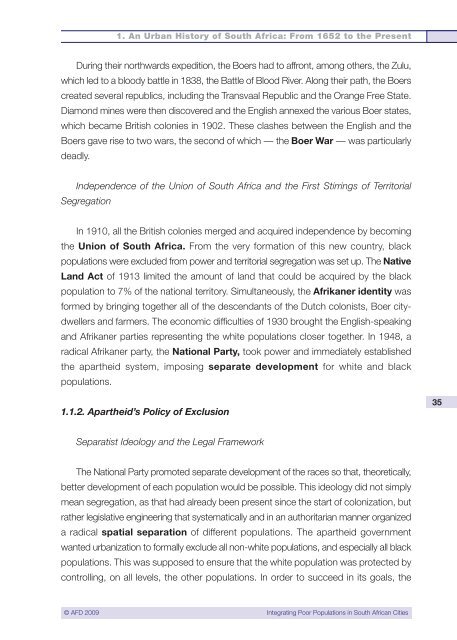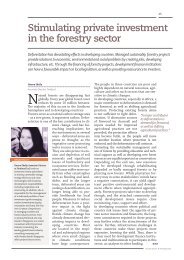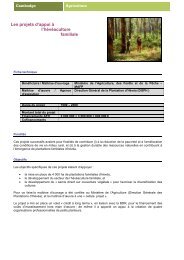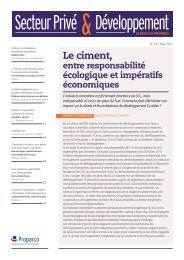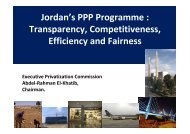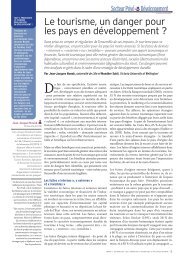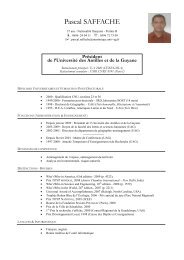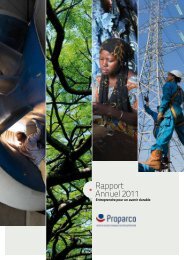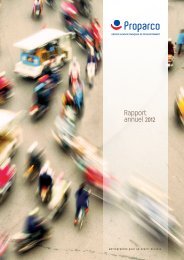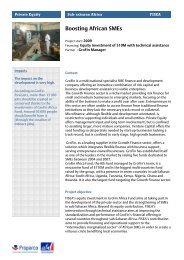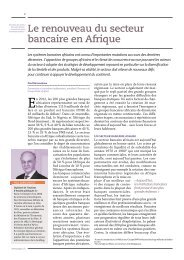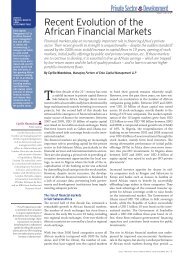Integrating Poor Populations in South African Cities - Agence ...
Integrating Poor Populations in South African Cities - Agence ...
Integrating Poor Populations in South African Cities - Agence ...
You also want an ePaper? Increase the reach of your titles
YUMPU automatically turns print PDFs into web optimized ePapers that Google loves.
1. An Urban History of <strong>South</strong> Africa: From 1652 to the Present<br />
Dur<strong>in</strong>g their northwards expedition, the Boers had to affront, among others, the Zulu,<br />
which led to a bloody battle <strong>in</strong> 1838, the Battle of Blood River. Along their path, the Boers<br />
created several republics, <strong>in</strong>clud<strong>in</strong>g the Transvaal Republic and the Orange Free State.<br />
Diamond m<strong>in</strong>es were then discovered and the English annexed the various Boer states,<br />
which became British colonies <strong>in</strong> 1902. These clashes between the English and the<br />
Boers gave rise to two wars, the second of which — the Boer War — was particularly<br />
deadly.<br />
Independence of the Union of <strong>South</strong> Africa and the First Stirr<strong>in</strong>gs of Territorial<br />
Segregation<br />
In 1910, all the British colonies merged and acquired <strong>in</strong>dependence by becom<strong>in</strong>g<br />
the Union of <strong>South</strong> Africa. From the very formation of this new country, black<br />
populations were excluded from power and territorial segregation was set up. The Native<br />
Land Act of 1913 limited the amount of land that could be acquired by the black<br />
population to 7% of the national territory. Simultaneously, the Afrikaner identity was<br />
formed by br<strong>in</strong>g<strong>in</strong>g together all of the descendants of the Dutch colonists, Boer citydwellers<br />
and farmers. The economic difficulties of 1930 brought the English-speak<strong>in</strong>g<br />
and Afrikaner parties represent<strong>in</strong>g the white populations closer together. In 1948, a<br />
radical Afrikaner party, the National Party, took power and immediately established<br />
the apartheid system, impos<strong>in</strong>g separate development for white and black<br />
populations.<br />
1.1.2. Apartheid’s Policy of Exclusion<br />
35<br />
Separatist Ideology and the Legal Framework<br />
The National Party promoted separate development of the races so that, theoretically,<br />
better development of each population would be possible. This ideology did not simply<br />
mean segregation, as that had already been present s<strong>in</strong>ce the start of colonization, but<br />
rather legislative eng<strong>in</strong>eer<strong>in</strong>g that systematically and <strong>in</strong> an authoritarian manner organized<br />
a radical spatial separation of different populations. The apartheid government<br />
wanted urbanization to formally exclude all non-white populations, and especially all black<br />
populations. This was supposed to ensure that the white population was protected by<br />
controll<strong>in</strong>g, on all levels, the other populations. In order to succeed <strong>in</strong> its goals, the<br />
© AFD 2009 <strong>Integrat<strong>in</strong>g</strong> <strong>Poor</strong> <strong>Populations</strong> <strong>in</strong> <strong>South</strong> <strong>African</strong> <strong>Cities</strong>


